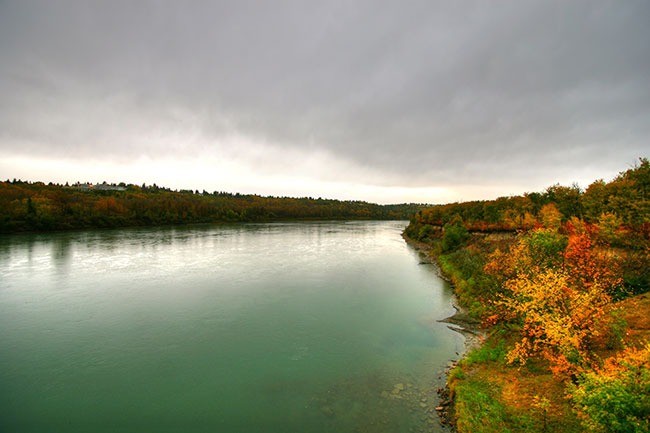Fort Saskatchewan

The motto Engaged People, Thriving Community from the Planning and Development Department of Fort Saskatchewan is engaging indeed. It aptly describes the motivation of a City Council that cares about what their residents want and need in working together to build a cohesive and thriving community.
Located just northeast from Edmonton along the North Saskatchewan River, Fort Saskatchewan forms part of the 24 municipalities that make the up Capital Region Board.
In fact the North Saskatchewan River has played a significant role in the history and development of the city and region. In 1875 the North-West Mounted Police built their fort on the river, first establishing Fort Saskatchewan. The region expanded once the Canadian Northern Railway was allowed to build a bridge over the river to reach Fort Saskatchewan in 1905. 1904 saw the upgrade of Fort Saskatchewan from village in 1899 to town, and then incorporated as a city in 1985. The railway did much to open up this area, with population recorded to have doubled to just under a thousand residents over the next decade. In the early days the North Saskatchewan River was crossed by ferry. Today, a boat launch into the river at the west end of the city is called Red Coat Landing, and part of what the city offers in the way of recreation.
Fort Saskatchewan is home to 22,808 residents (as per the 2014 Census), who are employed by a number of the large companies in the area, which include Dow Chemical, Sherritt International, Agrium and Shell Canada. With the economic share that Fort Saskatchewan plays as part of Alberta’s Industrial Heartland, this region is commercially and industrially vibrant. Of course the service industries and large multi-national companies that contribute to the economy are numerous.
Sherritt was the first in the locale, building its nickel refinery in 1952 and opened in 1954. Others followed – like Dow Chemical opening in 1961, with significant increases in the population drawn to the region for employment as each industry opened up.
The City boasts their Dow Centennial Centre (DCC), as a state-of-the-art complex: the Landrex Recreation Pavilion and Sherritt Cultural Pavilion are hosts to a range of recreational and sporting programs, as well as theatre, art gallery, art and pottery studios, organized events and business and other cultural activities. Hockey is one of the major sports played in Fort Saskatchewan, with 6 hockey players from the region with NHL careers, either current or retired.
Harbour Pool has a 6-lane pool, with other amenities including whirlpool, warm pool, sauna, diving board, rope, and climbing apparatus amongst other features. Fort Saskatchewan offers their Leisure Guide for residents, with Spring and Summer programs being open for registration from early March. Still with winter lingering a little while longer, Fort Saskatchewan offers much for the family in the way of snow shoeing, hiking or cross country skiing on the trail system. Ice fishing is another sport at West River’s Edge at the Lions Club Trout Pond. Other residents might favour curling, indoor or outdoor skating with 2 outdoor-boarded rinks, 3 snowbank rinks and 3 indoor rinks. Toboggan Hills is a wonderful place for the family to enjoy the fresh air and exercise of tobogganing or sledding.
If you are looking to explore more of the region’s history you can visit The Fort Saskatchewan Museum & Historic Site.
Fort Saskatchewan has become known nationally and internationally for its eco-friendly sheep-grazing program -– between June and September, a flock of about 50 sheep are herded by border collies trimming grass in city parks. They have been described as the perfect mascot for Fort Saskatchewan for their “friendliness, warmth and hospitality.”








